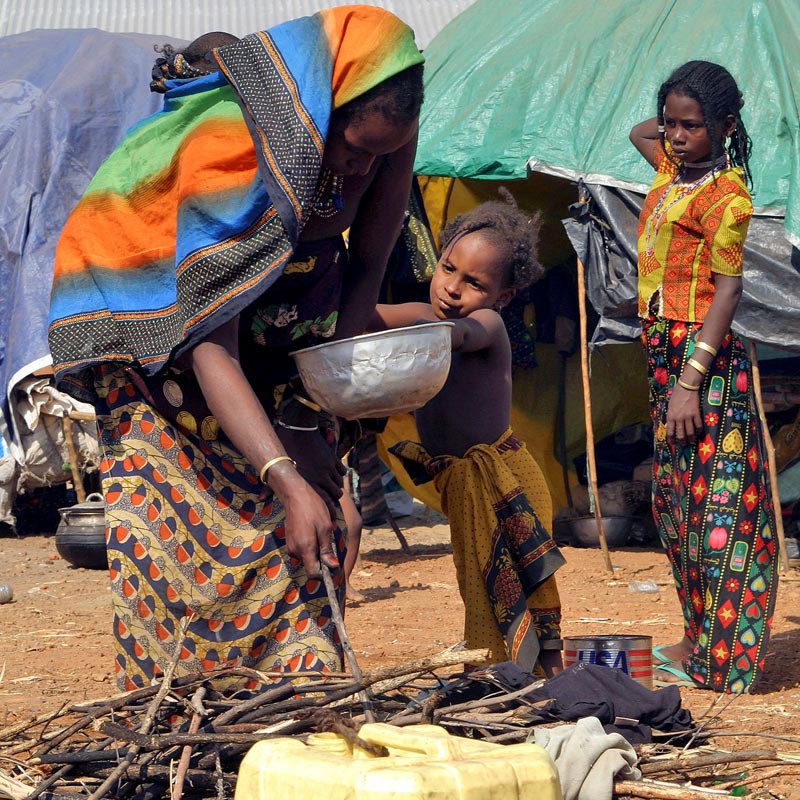Abel Barrera of Tlachinollan Centro de Derechos Humanos de la Montaña writes about what rainbows mean to Indigenous communities in the region of Guerrero state known as La Montaña.
There is a longstanding legend among the Indigenous peoples of Guerrero, Mexico that beneath the place where a rainbow is born, lies the community’s treasure—a spell that only the men and women chosen by the sacred powers can decipher. We are taught as children not to point to the shining arch in the sky that so enchants our eyes. If we do, the adults tell us, our hands may turn to dust. The rainbow is a visual illusion at once spellbinding and terrifying.
For the Indigenous communities in the region of Guerrero state known as La Montaña, or, The Mountain, a lightning bolt announces and attracts the rain. It is like a whip that strikes Quetzalcoátl, the Aztec god of air, represented as a plumed serpent, who lives at the foot of the rainbow. The wise men and women of the communities have to ingratiate themselves with the serpent so that it will not block the arrival of the good rain.
The rainbow has a double meaning: it can be bad, announcing drought and disease, but it can also be transformed into a sign of good fortune with an Indigenous intervention. The people make an offering of fresh squash tamales at an altar to the serpent who lives at the foot of the rainbow, then dance around the altar ritualizing the sacrifice for the serpent. It is then that the rainbow will announce the coming of the rains and prosperous times. This duality explains how opposing forces can overcome adversity.

The rainbow symbolizes the hope that human rights defenders inspire. Municipality of Atlixtac, La Montaña region in Guerrero State.
The spell cast by the rainbow can be a sinister sign, and that is why the wise men and women pray on the mountaintops throughout La Montaña. The arrival of the coronavirus in Indigenous communities forced local authorities to put up blockades and limit people’s trips to the city. Community confinement, medicinal plants, temascal baths and the “Xtambá” ritual—the prayer to secure a community from plagues and diseases—were the measures the community decided upon in assemblies to confront the virus in the absence of health care workers and infrastructure in La Montaña.
Even without the coronavirus in this rocky enclave, death is an unavoidable companion for those who struggle against crime. Local powerbrokers, known as caciques, impose their laws of bondage with gunmen who persecute the poor. They torture, disappear, or pump those who rebel full of lead. And the State continues to protect human rights violators: for many judges, power and money have more weight on the scales of justice.
The communities of La Montaña have planted the seeds of human rights to confront institutionalized violence, just as they intervene to transform the rainbow’s omen. With the fortitude of the survivors, we unwind the knot of impunity and force accused perpetrators to take the stand.
The victims of femicide, the survivors of sexual torture, the communities fighting to defend their territories from mining corporations, the families of disappeared persons, and the parents of the 43 Ayotzinapa college students who were disappeared by police in 2014 have all taught us to demand justice with brave and strong hearts. Surrounded by dangers and threats, these figures take on the qualities of giants: their moral authority ruins the wicked plans of the government authorities, police and military forces, and organized crime. The peoples of La Montaña, now besieged by the coronavirus, violence, and hunger, are the fortress of dignity during this long night of infamy.
Always uphill, planting seeds on the hillsides, the maize crops never suffice; walking through the mud; suffering mistreatment and discrimination from the authorities; confronting gangs and powerbrokers in collusion; always carrying the pain of forcibly disappeared or murdered loved ones, the women and men of La Montaña are the rainbow of human rights, the rainbow that has heard the prayers of the wise women and men.



